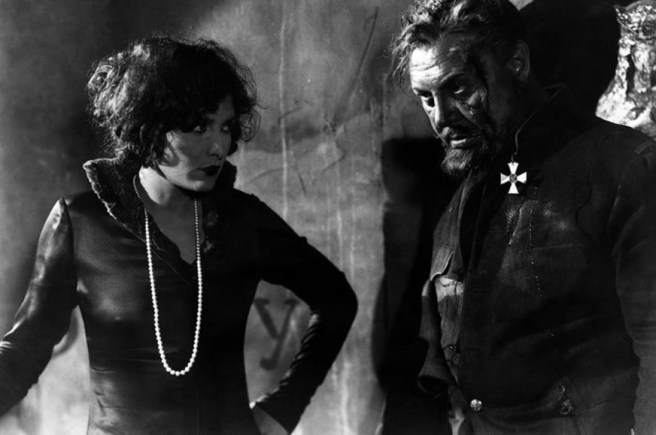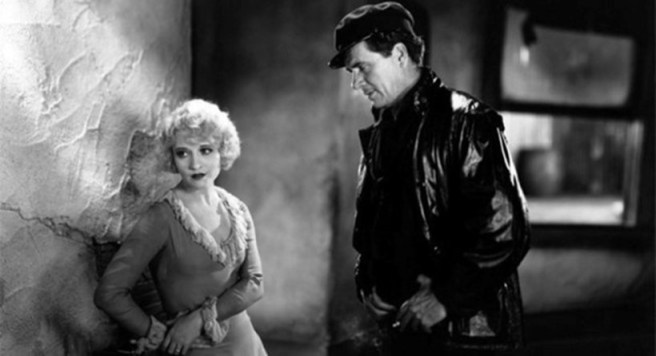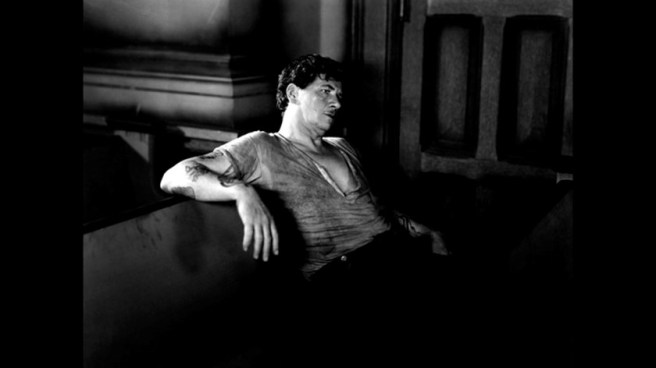When cinephiles consider Josef von Sternberg, they usually think about beautiful, erotic images of Marlene Dietrich, set in exotic, far-off places but shot entirely on the Paramount lot. Yet before he met Dietrich or made a talkie, he created three stunning silent dramas that are among his best work.

These three films, Underworld, The Last Command, and The Docks of New York, are now available in a boxed set from Criterion. If you’re a silent film fan, this box belongs in your collection.
With his strong eye for images and his mastery of the camera, von Sternberg seemed perfect for the silent screen. I’m not just talking about beauty, although his films are visually gorgeous. In these three films, he creates moods and thrills through light. He got the best out of his actors (many of whom hated him), and he showed a special skill for that greatest of cinema’s tools, the close-up.
Eventually, he would put visuals ahead of story or character, causing critic and filmmaker John Grierson to say of von Sternberg, “When a director dies, he becomes a photographer.” But at the end of the silent era, von Sternberg made three wonderful films. Let’s look at these films in the order they were made:
Underworld
Five years after von Sternberg made this silent gangster flick at Paramount, Warner Brothers would be churning out movies with similar plots and snappy dialog, but without Underworld’s visual flair. From a story by Ben Hecht, it follows the rise and fall of a Chicago criminal whose jealousy is his weakness (George Bancroft). Evelyn Brent plays his girl, but Clive Brook steals the show as the alcoholic and eventually reformed friend.

The day before Underworld premiered, Hecht was the only famous person connected with the film. The movie became a surprise hit, making Bancroft, Brent, and Brook stars. And von Sternberg could make any movie he wanted.
The Last Command
With Paramount now willing to give von Sternberg a big budget, he created an epic story within a story about patriotism, Hollywood, and the ravages of revolution. He even got Emil Jannings, one of the world’s greatest stars. The best of these three films, The Last Command takes place in two countries and over nearly a decade. Von Sternberg shows us the insane cruelty on both sides of the Russian Revolution, and the dehumanization within the Hollywood system.

Jannings won the very first Best Actor Oscar for his portrayal of a tired, frightened movie extra with an annoying tick (he actually won the award for this performance and another for The Way of All Flesh). But he wasn’t always like that. In a flashback that makes up most of the film, we meet him as a strutting, strict Russian general during the Great War. The revolution and the loss of a woman destroys the life he had. William Powel, not yet a star, plays a revolutionary turned Hollywood director.
A bit of history: Emil Jannings was one of Germany’s top stars when, in 1926, he immigrated to Hollywood. The Last Command was the second of his six American films, before the talkie revolution sent him back to Germany. He spent the last 12 years of his career making Nazi propaganda movies.
The Docks of New York
Think of this as the serious, yet still very romantic, version of On the Town. A coal-fired steamship docks on Manhattan, and a stoker goes on shore leave. Almost immediately, he saves the life of a suicidal prostitute and then, on a whim, marries her. But there are complications. Set on the seamy side of the Big Apple, it’s a romance set against a world of crime, prostitution, and cynicism.

It’s a thin plot, but what von Sternberg got out of his actors and his camera makes the film special. George Bancroft is just amazing as a tough, sometimes violent man with a basic sense of love and decency; Betty Compson gives a fine performance as the down-and-out object of his love.
How It Looks
It’s difficult to review the image quality of these films. Is the image soft because the picture has been allowed to degrade, or because that’s the way von Sternberg wanted it to look? My guess is it’s mostly the later. The 1080p Blu-ray image is pillarboxed to the conventional silent aspect ratio of 1.33×1.

The digital scans were created from fine-grain masters and a duplicate negative. Although “Thousands of instances of dirt, debris, scratches, splices, and warps were manually removed,” some scratches were occasionally visible – but not enough to hurt your enjoyment.
How It Sounds
Each movie contains a full orchestrational score composed and conducted by Robert Israel. Underworld and The Last Command have alternative scores by the Mont Alto Motion Picture Orchestra (sometimes a quintet or sextet, but never a full orchestra). Pianist Donald Sosan
provides The Docks of New York‘s alternate score, which also includes occasional singling by Joanna Seaton.
I haven’t heard all the scores all the way through. Israel’s scores tend to be full, appropriate, and conventional. Monte Alto’s are darker and more expressionistic. Sosan’s are simpler, which is appropriate, since Docks is the simpler story.

All six scores are presented in uncompressed, two-track stereo LPCM.
And the Extras
The best extra can’t be read by a laser. It’s a 96-page book (the paper kind) containing seven articles along with credits for the three movies, the discs, and the packaging. Here are the articles:
- Dreamland: An article on Underworld by Georffey O’Brian
- Illusions and Delusions: Anto Kaes on The Last Command
- On the Waterfront: Luc Sante on The Docks of New York
- On the Scores: By the composers of the six scores
- Underworld: An Original Story of Chicago: Ben Hecht’s original treatment for Underworld
- Von Sternberg on Jannings: An excerpt from von Sternberg’s autobiography, Fun in a Chinese Laundry
- About the Transfers: No author given
As far as extras on the discs, this package is surprisingly thin for Criterion.
- Underworld: How It Came to Be: 36 minutes. Video essay by film professor Janet Bergstrom. She covers von Stromberg’s early career, then the making and reception of Underworld, illustrated with stills, text, and clips. Bergstrom is a knowledgeable scholar, but she speaks in a dull monotone.
- Von Sternberg Till ’29: 35 minutes. Another video essay, this time by Tag Gallagher. He covers much of the same territory as Bergstrom but goes through to the end of the silent era.
- Josef von Sternberg Interview: 40 minutes. From a 1968 Swedish TV show. The interview itself is in English, but film clips and stills are narrated in Swedish with English subtitles. You get a real sense of the man near the end of his life.
